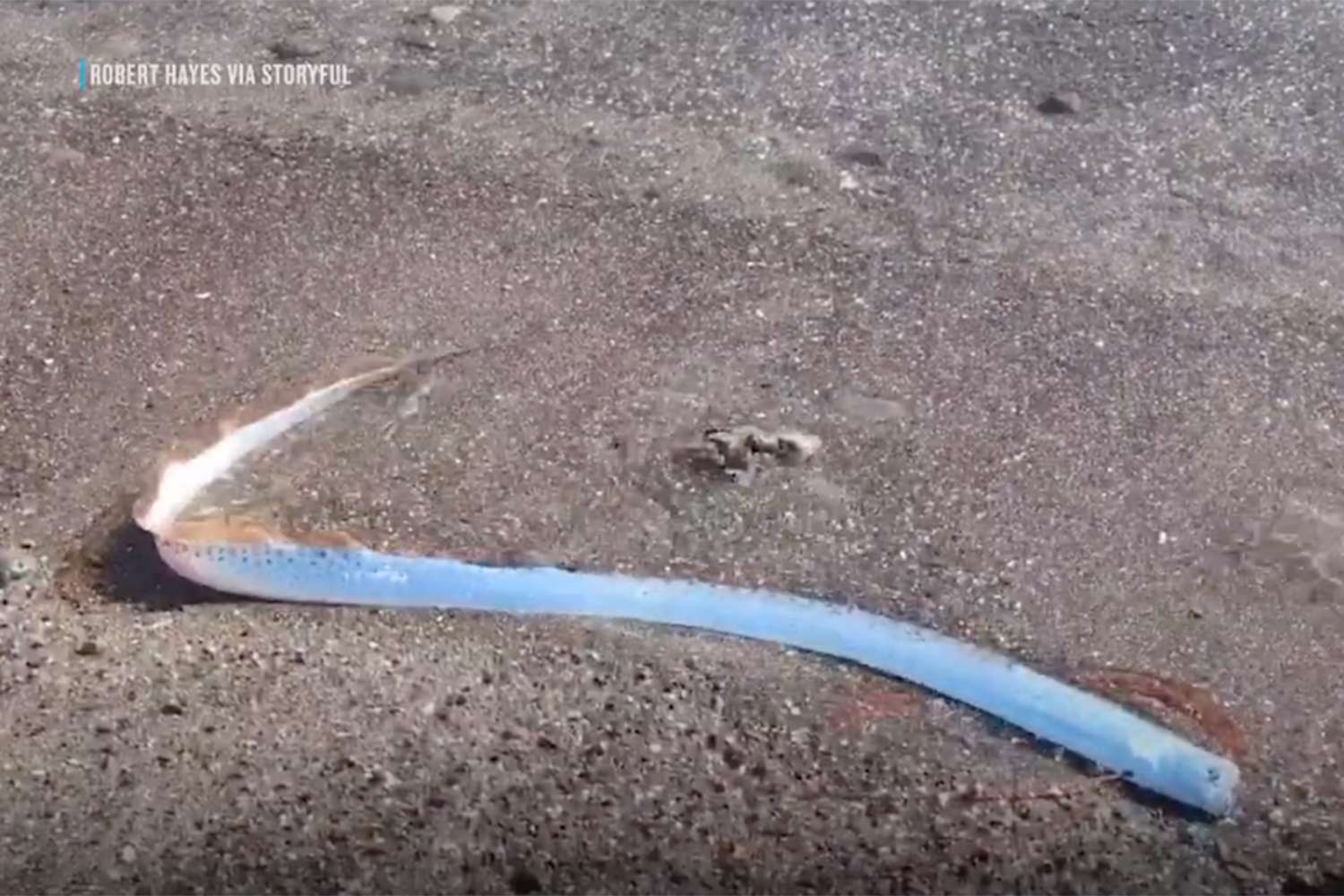Unbelievable Oarfish Encounter on Mexico Beach: What You Need to Know

An overview of the unusual oarfish sighting at Playa El Quemado in Mexico.
In an extraordinary spectacle that has beachgoers buzzing, a peculiar oarfish, nicknamed the "doomsday fish," was sighted off Playa El Quemado in Baja California Sur. The incident unfolded on February 9, when visitors caught a glimpse of this rarely seen marine creature. Captured on video by Robert Hayes, the vibrant oarfish flailed its long, serpent-like body, making waves both in the water and online.
As excitement grew, one observer noted the strange behavior of the fish, which swam close to shore, and even lifted its head above the water. Despite the group’s attempts to guide it back out to sea, the oarfish made a return to them each time. This unusual encounter raised eyebrows, particularly given the oarfish's reputation as a barometer for impending natural disasters, stemming from legends linking its sightings to earthquakes.
The myth surrounding the oarfish runs deep, with historical precedence noted in Japan after sightings predicted catastrophic events. As experts weigh in, those living near coastal waters remain on alert, knowing that the presence of this elusive creature might serve as a warning from the ocean itself. The public fascination continues to grow, intertwining science and superstition.
The significance of oarfish appearances and their connection to potential earthquakes.
The recent sighting of an oarfish in Mexico has reignited interest in the unusual folklore surrounding these elusive creatures. Often dubbed the “doomsday fish,†the oarfish is believed to be a harbinger of natural disasters, particularly earthquakes. This connection has fascinated many, as anecdotal evidence suggests that their appearances might signal impending seismic activity.
While the legend persists, science offers more nuanced explanations. The oarfish typically thrives in the deep ocean, so when they surface, it often indicates distress. Experts suggest factors like changing ocean conditions could explain why these mysterious fish end up on our shores. This could also be linked to broader environmental shifts, making their appearances an important topic for marine researchers and enthusiasts alike.
In recent history, the connection between oarfish sightings and earthquakes strengthened with the 2011 Japan earthquake. A string of oarfish washed ashore prior to the disaster, leading many to wonder if there’s more to these creatures than meets the eye. As the oarfish continues to captivate beachgoers and scientists alike, it challenges us to look deeper into our oceans and the natural world.
Expert insights on the behavior of oarfish and their relationship with ocean conditions.
The enigmatic oarfish, often dubbed the "doomsday fish," has long captivated the imaginations of beach lovers and ocean enthusiasts. Expert insights reveal that these elusive creatures are usually found in the deep sea. When they do venture closer to the surface, it often indicates they're disoriented or experiencing health issues. Drifting into shallower waters may imply a significant shift in ocean conditions that warrants further research.
According to marine biologists, ocean phenomena such as the El Niño and La Niña cycles can significantly affect oarfish behavior. Increased sightings, particularly along beaches, may suggest changes in temperature and fish populations. Oceanographer Ben Frable emphasizes that understanding these patterns is crucial, as it highlights the intriguing connections between marine life and their environmental surroundings.
For those fascinated by marine myths, the association between oarfish sightings and impending natural disasters is particularly chilling. Indigenous legends assert that when these long, ribbon-like fish appear, it serves as a forewarning of seismic activity. Given their unparalleled rarity and breathtaking appearance, oarfish not only spark curiosity but also encourage us to remain vigilant about the health of our oceans.